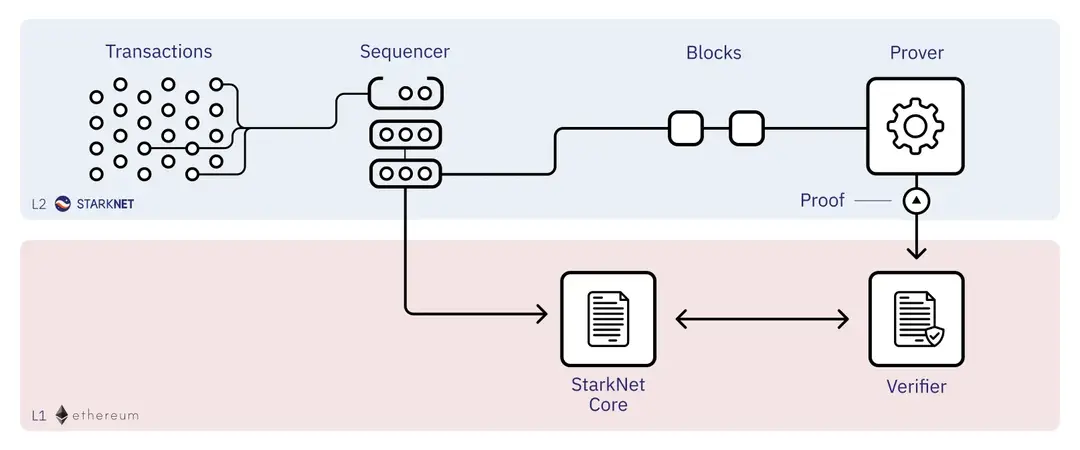Welcome to the world of Web3, where cryptocurrencies, blockchain, and a unique culture converge. Entering the world of Web3 can be both thrilling and overwhelming, especially when faced with the seemingly cryptic language used by enthusiasts. Don't worry if you feel they sound like some secret codes, we are here to unravel their meaning. In this article, we are going to introduce [Sequencer].
A sequencer in the crypto world is a component that orders transactions within Layer 2 solutions, such as Optimistic Rollups or zk-Rollups. Imagine sequencer as a fast-track process that makes everything easier, especially for newer layers built on top of the main blockchain.
The sequencer batches multiple off-chain transactions and then submits a summarized update to the main blockchain network, which facilitates improved scalability and efficiency by enhancing transaction throughput and reducing fees.
A sequencer works by taking a bunch of transactions that people want to make on a blockchain and organizing them into a specific order. Here's a simplified breakdown of how it does this:
1.Collect Transactions: First, the sequencer gathers many transactions from users. These are actions people want to perform, like sending cryptocurrency or interacting with apps on the blockchain.
2.Order Transactions: The sequencer then decides the order of these transactions. This step is crucial because the sequence can affect the outcome of transactions, especially if they're related or if there's a lot of demand on the network.
3.Batch Transactions: Instead of processing each transaction one by one on the main blockchain (which can be slow and expensive), the sequencer groups (or batches) them together. This is like putting all your groceries on the conveyor belt at once instead of paying for each item separately.
4.Submit a Summary: After organizing and batching, the sequencer then creates a summary or a compressed version of all these transactions and submits it to the main blockchain. This summary is much smaller than the total data of all transactions combined, which saves space and makes everything faster.
5.Proving and Verifying: Parallel to this, a prover generates a proof that these transactions and the resulting state update are valid. This proof is sent back to Layer 1, where a verifier checks it to ensure everything is correct and secure.
6.Update the Blockchain: The main blockchain, such as Ethereum, receives this summary and updates its records. This update reflects all the batched transactions as if they happened individually, but it's done much more efficiently.
By doing this, sequencers allow for many transactions to be processed quickly and cheaply, which helps the blockchain scale up and support more users and applications without getting bogged down.
The Backstory of Sequencer
The evolution of the sequencer in web3 is a tale of blockchain's quest for scalability. As Ethereum gained popularity, its limitations in transaction processing speeds and high costs due to network congestion became apparent. This led to the advent of Layer 2 solutions like Optimistic and zk-Rollups, where sequencers first made their mark. Sequencers organize and order transactions off the main chain, allowing for bulk processing and efficient finalization on Ethereum. Sequencers were inintially centralized but gradually transitioned towards decentralization for enhanced security.
Centralization of sequencers posed significant risks, such as weaker censorship resistance, potential for single-point failures leading to system downtime, and risks associated with miner extractable value (MEV) due to the first-come-first-served transaction processing.
To mitigate these risks, the crypto world has explored decentralized sequencers with proposals by Vitalik Buterin and the implementation of Proposer-Builder Separation (PBS) models like Aztec’s variation, which separates the powers of sequencing and block inclusion to ensure decentralization. The shared sequencer approach also emerged, aiming to decentralize the process and enhance security.
Sequencer: A Simple Example
Imagine you're a Web3 developer who is building DeFi solutions. The sequencers take the transactions you or your users create, sort them in the right order, and then execute them so that the transactions to be finalized and officially recorded. This system, with its organized mempool and efficient execution methods, makes your job easier, ensuring transactions are processed smoothly, making the network faster and more cost-effective for everyone involved.
Sequencers tackle scalability and efficiency issues in blockchain by organizing and batching transactions, which boosts throughput and lowers costs ahead of updates to the main blockchain. The evolution of sequencers from centralized to decentralized systems marks a broader move towards secure, efficient, and scalable blockchain networks.

